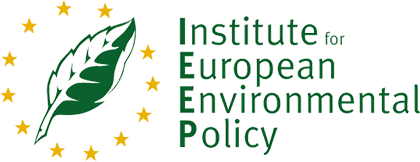Scientists call for the CAP to maintain and restore semi-natural habitats in agricultural landscapes
- Regan Early
- Oct 5, 2017
- 2 min read
Scientists call for the CAP to maintain and restore semi-natural habitats in agricultural landscapes
Work on the BiodivERsA-funded project ‘European Conservation was featured in a policy brief developed by the Institute for European Environmental Policy. You can read the policy brief here, and the press release below.
PRESS RELEASE
On 29 November 2017, the European Commission will present a communication on the Common Agricultural Policy (CAP) reform. In this context, the Institute for European Environmental Policy (IEEP) and BiodivERsA publish a policy brief entitled “The Common Agricultural Policy can strengthen biodiversity and ecosystem services by diversifying agricultural landscapes”, encouraging the European Commission to include new measures to maintain or restore semi-natural habitats in agricultural landscapes in the CAP reform.
The brief identifies five measures as key recommendations for policy-makers:
1. Set targets for the minimum proportion of uncropped areas in farmland areas needed to maintain the stability and resilience of biodiversity and ecosystem services under climate change.
2. Set CAP targets for the conservation and restoration of semi-natural farming habitats, especially the habitats in the Natura2000 network.
3. Increase funding of agri-environment climate measures and target them to maintain semi-natural habitats that are most at risk, or in need of restoration.
4. Modify rules and weightings for Ecological Focus Areas (EFAs) to encourage the selection of semi-natural vegetation options by farmers, and raise farmers’ awareness of its benefits, such as enhanced pollination of crops and control of pests through natural predation.
5. Use the CAP to maintain mixed farming landscapes and resist the pressure of specialisation.
Dr Clelia Sirami, landscape and conservation ecologist working at DYNAFOR-INRA in Toulouse (France) and coordinating the BiodivERsA-funded project FarmLand explains:
“Landscapes with smaller fields and more field edges have more biodiversity in crop fields than landscapes with large fields, even when the total area of semi-natural habitat is the same.”
Dr Regan Early, currently lecturer in conservation biology at the University of Exeter (UK) and formerly coordinator of the BiodivERsA-funded project EC21 as a researcher of the University of Evora (Portugal), explains semi-natural habitats can buffer negative effects of climate change:
“Semi-natural areas and green infrastructure elements within agricultural landscapes become even more important under changing temperature conditions as they can mitigate the negative effects of increasing temperatures on wild bee species richness and total abundance. Research has found a strong negative relationship between wild bee species richness and temperature.”
The researchers state that “Ecosystem services such as pollination and natural biological pest control depend strongly on the amount of semi-natural habitat patches on farmland, and the preservation of such habitats will become even more important due to the effects of climate change”, further highlighting the importance of maintaining and restoring semi-natural habitats in agricultural landscapes.
The policy brief presenting this information in more details is available online at:
For more information, please contact:
Frédéric Lemaître: frederic.lemaitre@fondationbiodiversite.fr
Tel.: (+33) 01.80.05.89.37.
Frédéric Lemaître is Officer in charge of science-society/policy interfacing of BiodivERsA.
This Press Release is published by BiodivERsA, a network of national and regional organisations that program and fund pan-European research on biodiversity and ecosystem services, offering innovative opportunities for the conservation and sustainable management of biodiversity.
BiodivERsA is funded under the Horizon 2020 ERA-NET COFUND scheme.
More information on BiodivERsA: http://www.biodiversa.org





Comments